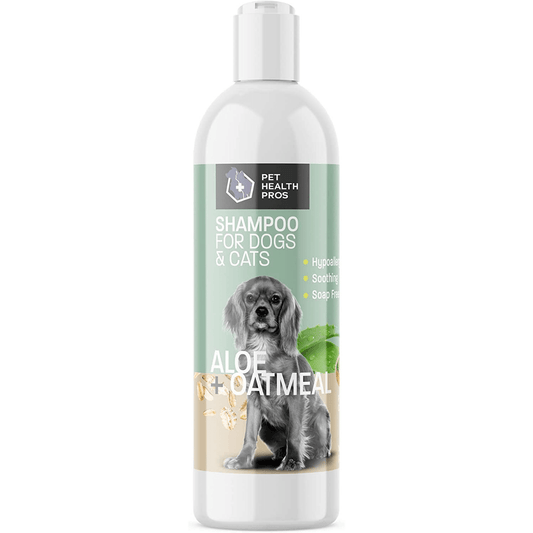If you're a dog owner, you might wonder about giving your pup Benadryl. This common allergy medication is often used by humans, but can it be safe for dogs? In this article, we’ll explore the ins and outs of Benadryl for dogs, including its benefits, risks, and what you should know before considering it for your furry friend.
Key Takeaways
- Always consult your vet before giving Benadryl to dogs.
- Dosage varies based on the dog's weight and health condition.
- Benadryl can help with allergies and motion sickness in dogs.
- Watch for side effects like drowsiness or dry mouth.
- There are alternative treatments available if Benadryl isn't suitable.
Understanding Benadryl and Its Uses
What Is Benadryl?
Benadryl is a brand name for the drug diphenhydramine, which is an antihistamine. It's something most people have in their medicine cabinets. It works by blocking histamine, a substance your body makes during an allergic reaction. This helps relieve symptoms like sneezing, itching, and runny nose. It's available over-the-counter, making it easily accessible for treating various allergy-related issues.
Common Uses in Humans
For people, Benadryl is often used to treat:
- Seasonal allergies (hay fever)
- Skin rashes and hives
- Cold symptoms
- Motion sickness
- Insomnia (due to its sedative effect)
It's a go-to medication for quick relief from these everyday ailments. I know I've used it a bunch of times when the pollen count goes crazy!
Potential Uses for Dogs
Benadryl can also be used for dogs, but it's important to know when and how. Vets sometimes recommend it for:
- Allergy symptoms (like itchy skin or hives)
- Motion sickness during car rides
- Mild anxiety or as a mild sedative
However, it's never a substitute for proper veterinary care. Always talk to your vet before giving your dog any medication, including Benadryl. They can tell you the right dose and make sure it's safe for your dog's specific health needs. It's also important to consider melatonin dog treats as a natural alternative for anxiety and sleep issues in dogs.
Can You Give Benadryl to Dogs?
So, can you actually give Benadryl to your dog? The short answer is often yes, but it's not quite that simple. It's super important to understand the details to keep your furry friend safe. Benadryl, or diphenhydramine, is a common over-the-counter antihistamine, and it can be used to treat certain conditions in dogs. However, it's not a one-size-fits-all solution, and there are definitely things you need to know before you reach for that bottle.
Dosage Guidelines
Getting the dosage right is absolutely critical. Giving too much Benadryl can be dangerous for your dog. A general guideline is 1 mg of Benadryl per pound of body weight, given two to three times daily. But, and this is a big but, you should always confirm the correct dosage with your vet before administering it. Here's a quick example:
| Dog's Weight (lbs) | Benadryl Dosage (mg) | Frequency |
|---|---|---|
| 10 | 10 | Every 8-12 hours |
| 25 | 25 | Every 8-12 hours |
| 50 | 50 | Every 8-12 hours |
Keep in mind that these are just examples, and your vet might recommend something different based on your dog's specific needs and health condition.
Forms of Benadryl for Dogs
You'll find Benadryl in a few different forms, including tablets, capsules, and liquid. The tablet form is often the easiest to administer, but the liquid form can be useful for smaller dogs where precise dosing is needed. Make sure to avoid Benadryl dosage products that contain other active ingredients like decongestants (e.g., pseudoephedrine) or pain relievers, as these can be toxic to dogs. Plain diphenhydramine is what you're after.
Consulting Your Veterinarian
This cannot be stressed enough: talk to your vet before giving your dog Benadryl. While it's available over the counter, it's not appropriate for every dog. Certain pre-existing conditions, like glaucoma, heart disease, or high blood pressure, can make Benadryl unsafe. Plus, your vet can help you determine if Benadryl is even the right medication for what's going on with your dog.
Think of Benadryl as a tool in your toolbox. It can be helpful in certain situations, but it's not a cure-all. Your vet is the expert who can help you decide if it's the right tool for the job and how to use it safely.
Benefits of Benadryl for Dogs
Allergy Relief
Benadryl is often used to alleviate allergy symptoms in dogs. It works by blocking histamine, a chemical released by the body during an allergic reaction. This can help reduce itching, sneezing, runny nose, and watery eyes. It's not a cure, but it can make your dog more comfortable. I've used it for my own dog when he gets seasonal allergies, and it seems to help him stop scratching so much. You can also consider allergy-specific sprays for dogs.
Motion Sickness Management
If your dog gets carsick, Benadryl might help. It has antiemetic properties, which means it can reduce nausea and vomiting. It also has a sedative effect, which can help calm an anxious dog during travel. It's best to give it about 30-60 minutes before the trip to allow it to take effect. I remember one time we drove cross-country with our golden retriever, and Benadryl was a lifesaver for his motion sickness.
Sedative Effects
Benadryl can act as a mild sedative for dogs. This can be helpful if your dog gets anxious during thunderstorms or fireworks. It can also help calm them down after surgery or during other stressful situations. However, it's important to note that the sedative effect varies from dog to dog. Some dogs might become very sleepy, while others might not be affected at all. It's always a good idea to test it out before you actually need it for a stressful event.
Benadryl can be a useful tool for managing certain conditions in dogs, but it's not a substitute for veterinary care. Always consult with your vet before giving your dog any medication, even over-the-counter drugs like Benadryl. They can help you determine the appropriate dosage and ensure it's safe for your dog's specific health needs.
Risks and Side Effects of Benadryl
Common Side Effects
Okay, so Benadryl can help your dog, but it's not without its downsides. The most common side effect? Drowsiness. Think of it like when you take it – you get sleepy, right? Same deal for your pup. Other common things to watch for include a dry mouth (so make sure they have plenty of water), and sometimes, they might have trouble peeing. Some dogs get the opposite effect and become hyper, but that's less common. It's good to know what to expect so you aren't caught off guard.
Serious Reactions to Watch For
While most side effects are mild, there are some serious reactions you need to watch out for. If your dog has trouble breathing, their gums look pale, or they collapse, get them to a vet immediately. These could be signs of a severe allergic reaction. Also, keep an eye out for signs of Benadryl overdose, like seizures or a really rapid heart rate. It's always better to be safe than sorry, so if anything seems off, call your vet.
Interactions with Other Medications
This is a big one. If your dog is already on other meds, Benadryl could cause problems. For example, if they're on sedatives, Benadryl can make them way too sleepy. And, there can be issues with certain heart medications or antidepressants. Always, always tell your vet about all the medications your dog is taking before you give them Benadryl. It could prevent a bad situation. It's important to understand the risks of human medication on dogs.
It's important to remember that every dog reacts differently to medications. What works well for one dog might not work for another, and some dogs are more prone to side effects than others. Always start with a low dose and monitor your dog closely for any adverse reactions.
Alternatives to Benadryl for Dogs
Benadryl can be a useful medication for dogs, but it's not always the best or only option. Several alternatives can provide similar benefits, sometimes with fewer side effects or more targeted action. It's always best to chat with your vet before switching medications, though!
Other Antihistamines
Several other antihistamines are safe for dogs, and some may even be more effective than Benadryl for certain conditions. The active ingredients in these medications differ, leading to variations in how they work and their potential side effects. Here are a few common alternatives:
- Zyrtec (cetirizine): Often considered longer-lasting than Benadryl, and may cause less drowsiness in some dogs. It's a good option for allergy relief for dogs.
- Claritin (loratadine): Similar to Zyrtec, Claritin is a non-drowsy antihistamine that can help with allergies. However, it might not be as effective for all dogs.
- Atopica (cyclosporine): This is a non-steroidal immunosuppressant that can help with allergies.
Natural Remedies
For mild allergy symptoms or as a complementary treatment, some natural remedies can provide relief. These options are generally gentler than medications, but it's important to use them cautiously and under veterinary guidance.
- Omega-3 Fatty Acids: These can help reduce inflammation and improve skin health, which can alleviate allergy symptoms. Fish oil is a common source.
- Quercetin: A natural antihistamine and anti-inflammatory compound found in many plants. It can help stabilize mast cells, reducing the release of histamine.
- Probiotics: A healthy gut can improve the immune system, potentially reducing allergic reactions. Look for dog-specific probiotics.
It's important to remember that natural remedies may not be as potent as medications and might take longer to show results. Always monitor your dog closely for any adverse reactions.
Behavioral Solutions
Sometimes, addressing the underlying cause of the problem can reduce the need for medication. For example, if your dog experiences anxiety-related issues, behavioral modification techniques can be helpful. These methods aim to change your dog's emotional response to triggers.
- Counter-Conditioning: Changing your dog's reaction to a trigger by associating it with something positive.
- Desensitization: Gradually exposing your dog to the trigger at a low intensity, slowly increasing it as they become more comfortable.
- Training: Teaching your dog commands like "stay" or "leave it" can help manage their behavior in situations that trigger anxiety or unwanted reactions.
When to Seek Veterinary Help
Benadryl can be helpful for dogs, but it's not a substitute for professional veterinary care. Knowing when to seek help from a vet is essential for your dog's well-being. Don't hesitate to reach out if you're unsure about something – it's always better to be safe than sorry.
Signs of Allergic Reactions
While Benadryl is used to treat allergies, sometimes a dog's reaction can worsen or become severe despite the medication. If you notice any of the following signs, it's time to contact your vet immediately:
- Difficulty breathing or wheezing
- Swelling of the face, tongue, or throat
- Hives or a widespread rash
- Severe vomiting or diarrhea
- Collapse or loss of consciousness
These symptoms could indicate a serious allergic reaction called anaphylaxis, which requires prompt treatment. It's important to know the signs of allergic reactions so you can act fast.
Overdose Symptoms
Giving your dog too much Benadryl can lead to an overdose. The signs can vary, but some common ones include:
- Severe drowsiness or lethargy
- Agitation or hyperactivity
- Dilated pupils
- Rapid heart rate
- Seizures
If you suspect your dog has overdosed, contact your veterinarian or an animal poison control center right away. It's helpful to have the product label and dosage information available when you call. Remember, proper dosage measurement is key to avoiding overdoses.
General Health Concerns
Even if your dog doesn't show signs of an allergic reaction or overdose, there are other situations where veterinary help is needed. These include:
- If your dog's symptoms don't improve after giving Benadryl.
- If your dog's condition worsens.
- If you notice any new or unusual symptoms after giving Benadryl.
- If your dog has underlying health conditions, such as heart disease or glaucoma.
It's always a good idea to consult with your vet before giving your dog any medication, including Benadryl. They can assess your dog's individual needs and provide guidance on the appropriate dosage and potential risks. Your vet knows your dog's health history best and can offer the most informed advice.
Best Practices for Administering Medications to Dogs
Proper Dosage Measurement
Getting the right dose is super important. Too little, and the medicine won't work; too much, and it could be harmful. Always double-check the instructions from your vet and use the measuring tools that come with the medication. Don't just guess!
- Use calibrated syringes or droppers for liquids.
- For pills, make sure you understand if you need to give a whole pill, half, or a quarter.
- If you're unsure, call your vet. Seriously, it's better to be safe than sorry.
Administering Pills or Liquid
Giving meds can be tricky, especially if your dog is stubborn. Here are a few tricks I've learned:
- Pills: Hide it in a treat! Peanut butter, cheese, or a pill pocket often works wonders. If that doesn't work, gently open your dog's mouth, place the pill far back on their tongue, and hold their mouth closed briefly while gently stroking their throat to encourage swallowing.
- Liquids: Use a syringe and aim for the side of their mouth, between their cheek and teeth. Go slowly so they don't choke.
- Make it positive! Praise your dog and give them a treat after they take their medicine. This helps them associate medicine time with something good.
I once tried to give my dog a pill by just tossing it in his mouth. He promptly spit it out and gave me the stink eye. Lesson learned: disguising the pill is key. Now, I wrap it in a tiny piece of cheese, and he gobbles it down without a second thought. It's all about finding what works for your dog.
Monitoring Your Dog's Response
After giving your dog medication, keep a close eye on them. Look for any changes in their behavior or physical condition. Are they more tired than usual? Are they scratching more? Are they having trouble breathing? These could be signs of a reaction.
- Watch for side effects listed by your vet.
- Note any changes in appetite or energy levels.
- Contact your vet immediately if you notice anything concerning. It's always better to err on the side of caution. Also, remember that pet medications should be stored properly.
When giving your dog medication, it's important to follow some simple steps to make it easier for both of you. Always check the dosage and instructions from your vet. Use a treat or food to hide the pill if your dog is picky. Make sure to stay calm and patient, as this can help your dog feel more relaxed. For more tips and detailed guidance on how to properly administer medications to your furry friend, visit our website today!
Final Thoughts on Benadryl for Dogs
In summary, giving Benadryl to dogs can be a bit of a mixed bag. While it can help with allergies and anxiety, it’s not without its risks. Always check with your vet before giving any medication to your dog. They can help you figure out the right dosage and whether it’s safe for your pet. Remember, what works for one dog might not work for another. Keeping your furry friend safe and healthy should always come first.
Frequently Asked Questions
Is it safe to give Benadryl to my dog?
Yes, but it’s important to check with your vet first. They can help you decide if it’s right for your dog.
What is the correct dosage of Benadryl for dogs?
The usual dose is 1 mg of Benadryl per pound of your dog’s weight, but always confirm with your vet.
What forms of Benadryl can I give my dog?
You can use tablets or liquid Benadryl, but make sure it doesn’t have any extra ingredients like alcohol or sugar.
What are the benefits of giving Benadryl to dogs?
It can help with allergies, calm dogs during travel, and act as a mild sedative.
What side effects should I watch for?
Common side effects include drowsiness, dry mouth, and sometimes upset stomach. If you see anything serious, call your vet.
Are there any alternatives to Benadryl for dogs?
Yes, there are other antihistamines and natural remedies, but check with your vet to find the best option.








